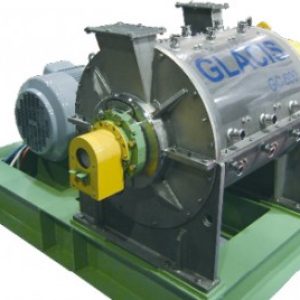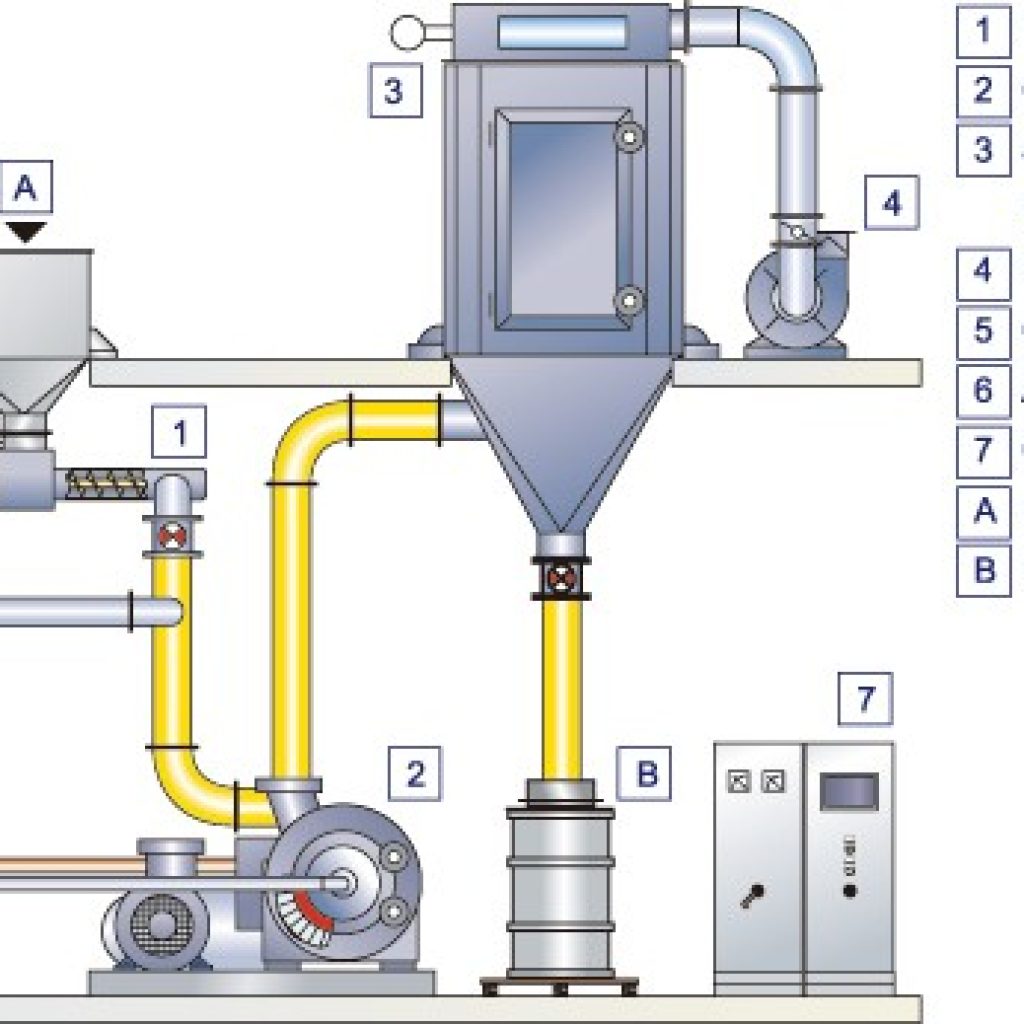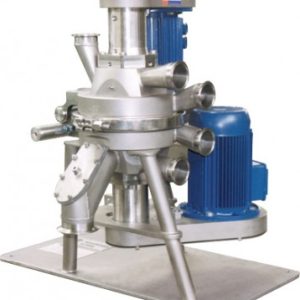Toner, used for copying machines and printers, is a powder made with a polymer compounded with a colorant. This powder is covered on to the surface of a sheet of paper and heat set to reproduce characters and graphics. For color printers, cyan, magenta, yellow and black colored polymer powder is overlapped to recreate clear graphics.
For this reason, toner needs a very precise uniformity at the particle level and requires the highest level of powder processing technology in the production process.
The developing process for a copier consists of exposure, development, transfer, fusing and cleaning processes. Summarizing the physical properties and characteristics of the toner required by each process, the toner needs the following physical properties; small particle size, a low melt point, a roundish shape and a sharp particle size distribution.
Toner is categorized in to milled toner and chemical toner.
Generally, ground toner is made by kneading a polymer with colorant, charge control agent and wax. This is then cooled and solidified after which the compound is milled. The ultra fine particles are removed and a flow control agent added.
Contents
The ground toner production process consists of mixing > kneading > cooling > coarse milling > fine milling > coarse classification > fines de-dusting (rounding) > additive mixing > filling. Hosokawa can provide equipment for all processes from coarse milling.
Coarse Milling
After melt-kneading and cooling, the toner in flake form is coarse milled so it can be fed into a fine mill. Generally a Feather Mill or Hammer Mill is used. In order to increase to the efficiency of the fine mill, a second step to mill the toner to 20-30 μm is necessary, and an ACM Pulverizer or Glacis is used.
Fine Milling
This process determines the final particle size of the toner and a Counter Jet Mill (TFG) or Glacis is used. Previously, toner particles were about 10 μm in size and did not have a very low melt point. This enabled the use of target type jet mills or mechanical mills. As printers and copying machines became faster, more energy efficient and with additional requirements for better color reproduction, toner melt point became lower and particle size came down. These requirements prompted the use of the Counter Jet Mill, which has no melting due to heat load, and mechanical mill with high cooling capability (Glacis)
Counter Jet Mill TFG
The TFG is a jet mill with integrated high performance classifier, which allows the removal of a separate coarse classification step downstream. The milling is conducted by colliding the material with each other that allows for the milling of low melt point materials making it especially suited for color toners. A hydraulic lifting system allows for the easy opening of the classification section making cleaning easy for color changes.
Mechanical Mill with High Cooling Glacis GC
The Glacis is a new mill that can process toner without melting due to the rotor design with coolant flowing through it. This increases the throughput capacity and prevents buildup. The Glacis, while having the low fine particle generation of a mechanical mill, the energy efficiency is higher compared to a jet mill, leading to a considerably lower CO2 output. When compared to other mechanical mills with cooled rotors, the Glacis can use more coolant flow allowing for a lower flow rate of cooled air during operation.
Coarse Classification TSP Separator, Cliffis CF
Coarse Classification TSP Separator, Cliffis CF
When a Glacis is used for the fine milling process, a TSP Separator is used as a coarse classifier. Using the centrifugal force from the rotation of the rotor and the suction of airflow, the TSP Separator, a dynamic classifier, has a very precise classification of coarse particles. The coarse particles are returned back to the mill. The latest development offers Cliffis CF series designed specifically top cut of the toner. The combination with Glacis offers the most economical process for grinding toner.
Fine Dedusting
In this process, the particle size distribution of the toner is narrowed. Quality is strictly controlled using the particle frequency. The efficiency of the classification has a large effect on the cost of the total toner production process.
The most common classifier used for this process is the Tandem Toner Separator TTSP. The TTSP is a dynamic classifier that uses two TSP classifier rotors one above the other. This increases the dispersion effect and residence time allowing for very high separation efficiency. The first rotor removes most of the fines and the second rotor completes the highly efficient removal of fines.
Rounding System
As the use of chemically produced toner increases, there is a higher need for the rounding of milled toner. The use of heat for rounding of toner was very common in the past, but due to the low heat resistance of the wax in the toner, heat rounding is only used in limited cases with mechanical rounding becoming more popular.
The particle sphericalizing machine Faculty is the machine for this purpose. The impact from the hammers smoothes the surface of the toner increases the sphericity, while the integrated classifier removes the fines. This classifier has the same performance as the TTSP so for processes that require rounding, the Faculty can be used for both rounding and fines de-dusting. This enables the inclusion of a rounding process without adding any additional equipment.
Post Blending
In the post blending process, a high intensity mixer was generally used. With the increased use of smaller toner particles and polymers with a higher hardness, the need to increase the bond between the toner particle and additives requires a more compression and shear. The particle composing machine Nobilta provides these qualities and is increasingly used for additive mixing.








